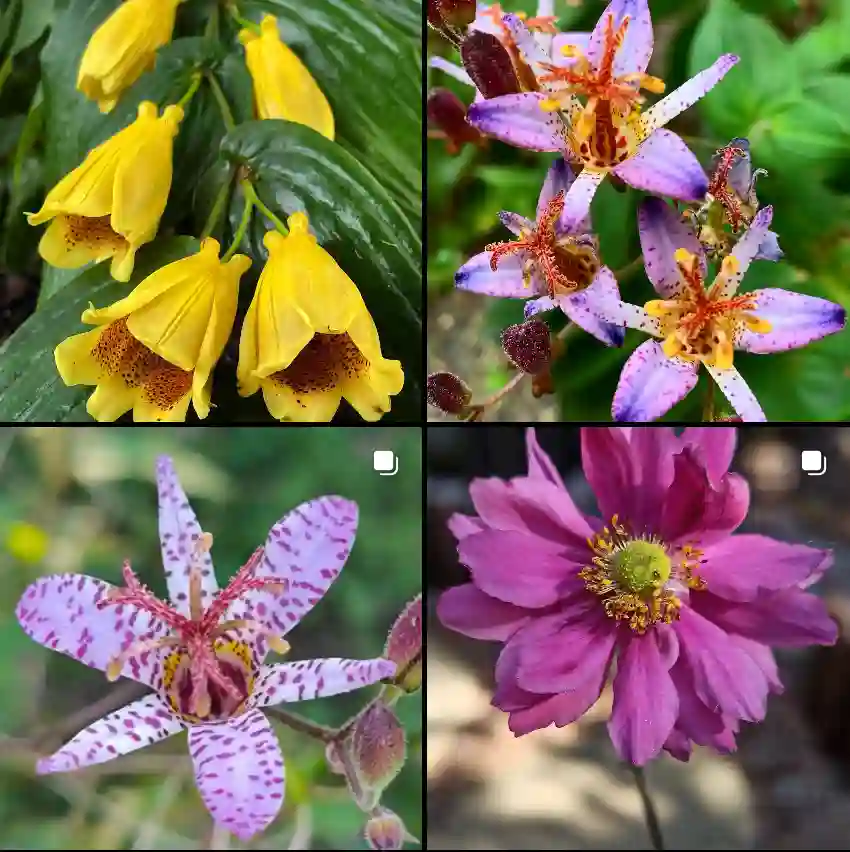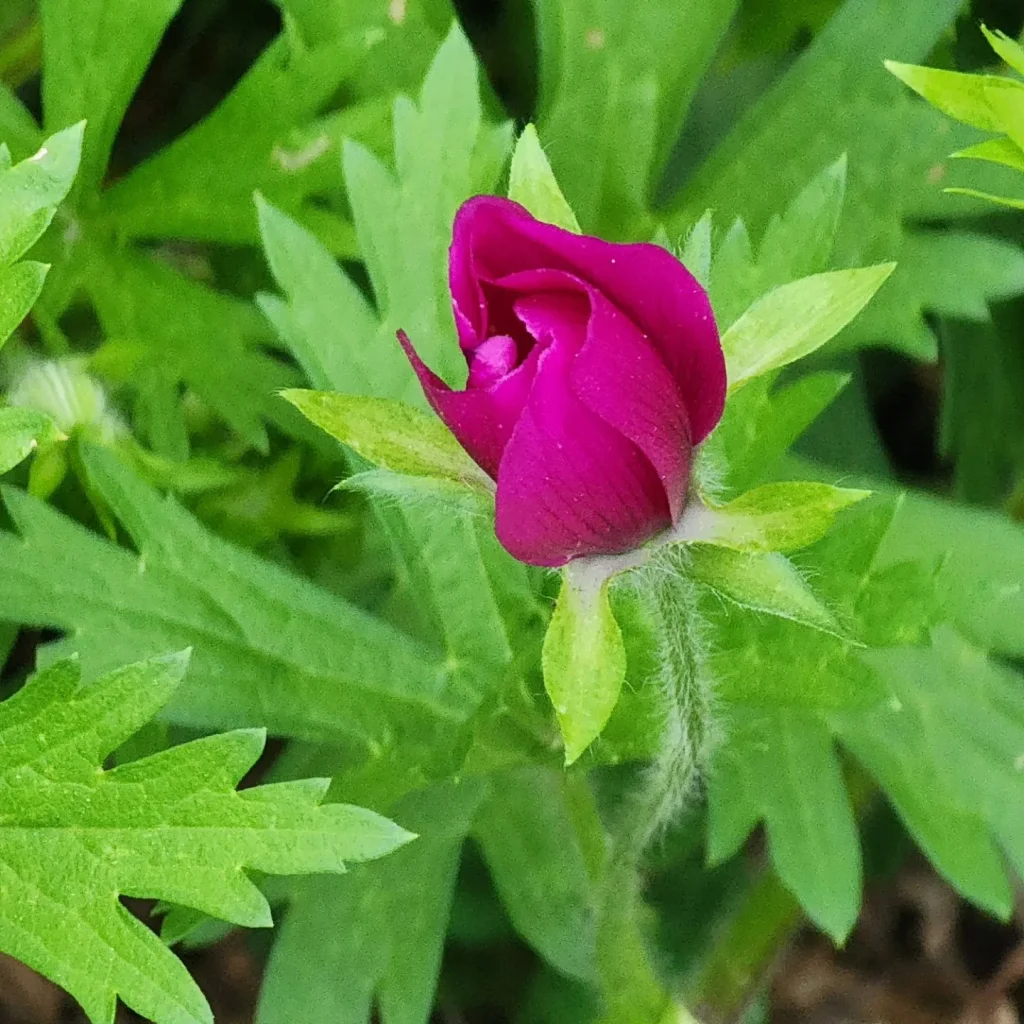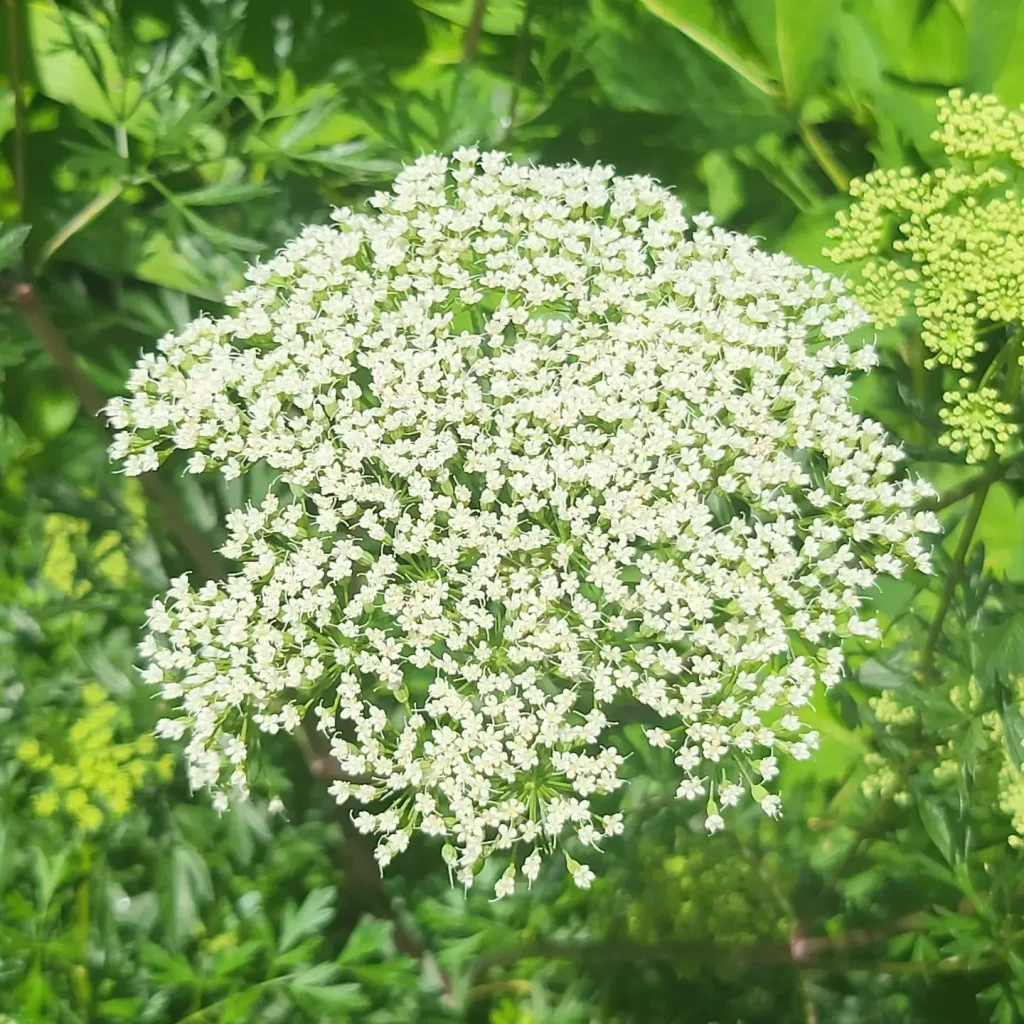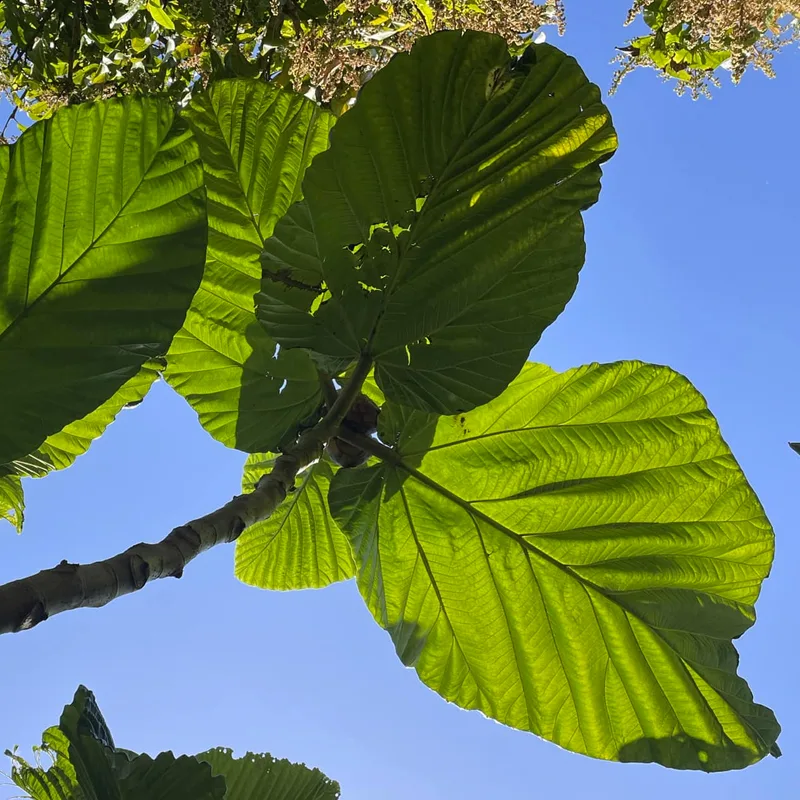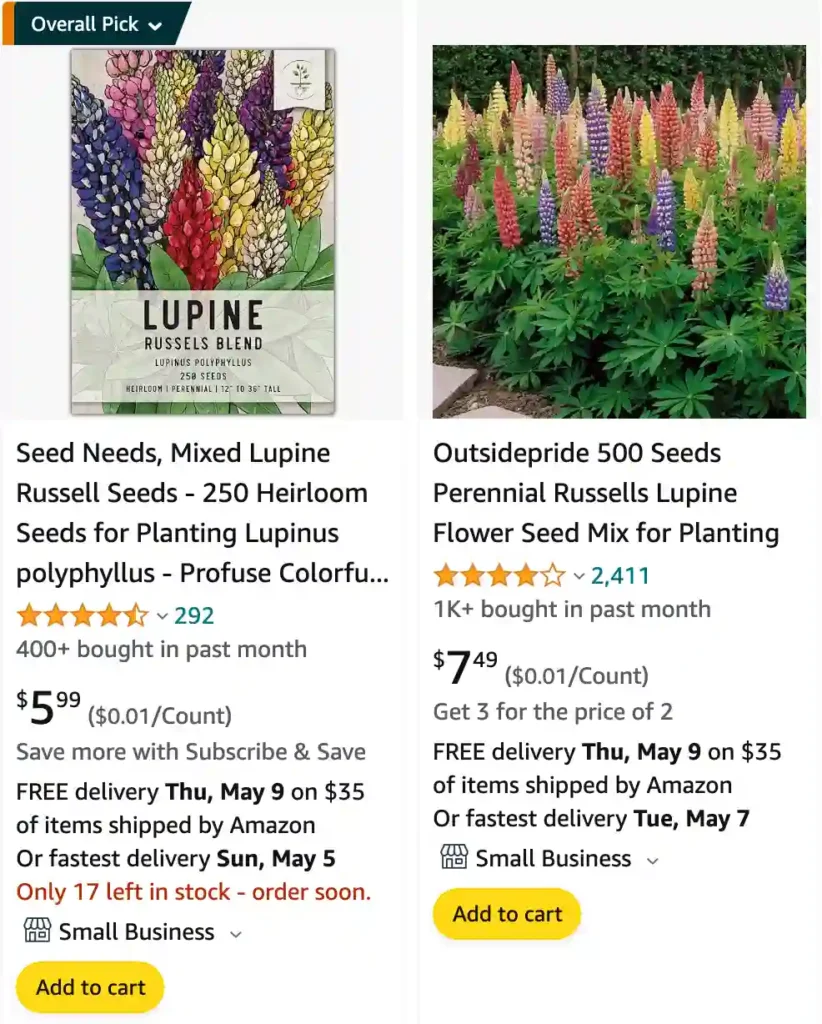
Lupinus: A Floral Fascination
My name is Ferb Vu, and I’ve always been drawn to the vibrant world of flora. Among the countless genera that grace our planet, one has particularly captivated my attention: Lupinus. More commonly known as lupin or lupine, this diverse genus boasts a fascinating array of species, each with its unique charm.
A Diverse Genus
Lupinus is a member of the Fabaceae family, more commonly known as the legume, pea, or bean family. This places it alongside other notable plants like clover, alfalfa, and peanuts. The genus itself is incredibly diverse, with over 200 species spread across the globe. While North and South America are considered the centers of diversity for Lupinus, they can also be found in smaller numbers in North Africa and the Mediterranean.
This geographical diversity contributes to the wide range of forms Lupinus can take. Some species are herbaceous annuals, completing their lifecycle within a single year. Others are robust perennials that return year after year, their roots delving deep into the earth. And then there are the woody shrubs, some even reaching the stature of small trees, their branches adorned with vibrant blossoms.
A Tapestry of Colors
One of the most striking features of Lupinus is the sheer variety of colors its flowers display. From the cool blues and purples of Lupinus perennis, the wild blue lupine native to eastern North America, to the warm yellows and oranges of Lupinus arboreus, the tree lupine gracing coastal California, the genus offers a veritable rainbow of hues. This diversity is further amplified by hybridization and selective breeding, resulting in cultivars with bicolor blossoms and unique shades.
More Than Just a Pretty Face
While their beauty is undeniable, lupins offer more than just aesthetic appeal. Many species have been cultivated for their seeds, which are a valuable source of protein and fiber. These seeds can be ground into flour, used as a coffee substitute, or even fermented into a tempeh-like food.
Lupins also play a crucial role in improving soil health. As members of the legume family, they have a symbiotic relationship with nitrogen-fixing bacteria. These bacteria reside in nodules on the lupin’s roots, converting atmospheric nitrogen into a form usable by plants. This process enriches the soil, benefiting not only the lupin itself but also other plants growing nearby.
A Closer Look: Notable Lupinus Species
The genus Lupinus encompasses a vast array of species, each with its unique characteristics and distribution. Here are:
- Lupinus aberrans C.P.Sm.
- Lupinus acopalcus C.P.Sm.
- Lupinus adinoanthus C.P.Sm.
- Lupinus adsurgens Drew
- Lupinus affinis J.Agardh
- Lupinus alaimandus C.P.Sm.
- Lupinus alaristatus C.P.Sm.
- Lupinus albert-smithianus C.P.Sm.
- Lupinus albescens Hook. & Arn.
- Lupinus albicaulis Douglas
- Lupinus albifrons Benth. Plant FAQs: Lupinus Albifrons
- Lupinus albosericeus C.P.Sm.
- Lupinus albus L.
- Lupinus aliamandus C.P.Sm.
- Lupinus aliattenuatus C.P.Sm.
- Lupinus alibicolor C.P.Sm.
- Lupinus alimanens C.P.Sm.
- Lupinus alinanus C.P.Sm.
- Lupinus alipatulus C.P.Sm.
- Lupinus alirevolutus C.P.Sm.
- Lupinus allargyreius C.P.Sm.
- Lupinus alopecuroides Desr.
- Lupinus altimontanus C.P.Sm.
- Lupinus altiplani C.P.Sm.
- Lupinus alveorum C.P.Sm.
- Lupinus amabayensis C.P.Sm.
- Lupinus amandus C.P.Sm.
- Lupinus amboensis C.P.Sm.
- Lupinus ammophilus Greene
- Lupinus amnis-otuni C.P.Sm.
- Lupinus ampaiensis C.P.Sm.
- Lupinus amphibius Suksd.
- Lupinus ananeanus Ulbr.
- Lupinus anatolicus W.Święcicki & W.K.Święcicki
- Lupinus andersonii S.Watson
- Lupinus andicola Gillies ex Hook. & Arn.
- Lupinus andinus Rose ex J.F.Macbr.
- Lupinus angustiflorus Eastw.
- Lupinus angustifolius L.
- Lupinus antensis C.P.Sm.
- Lupinus antoninus Eastw.
- Lupinus apertus A.Heller
- Lupinus appositus C.P.Sm.
- Lupinus aralloius C.P.Sm.
- Lupinus arboreus Sims
- Lupinus arbustus Douglas
- Lupinus arbutosocius C.P.Sm.
- Lupinus archeranus C.P.Sm.
- Lupinus arcticus S.Watson
- Lupinus arenarius Gardner
- Lupinus arequipensis C.P.Sm.
- Lupinus argenteus Pursh
- Lupinus argurocalyx C.P.Sm.
- Lupinus aridorum McFarlin ex Beckner
- Lupinus aridulus C.P.Sm.
- Lupinus aridus Douglas
- Lupinus ariste-josephi C.P.Sm.
- Lupinus arizelus C.P.Sm.
- Lupinus arizonicus (S.Watson) S.Watson
- Lupinus arvensis Benth.
- Lupinus asa-grayanus C.P.Sm.
- Lupinus aschenbornii S.Schauer
- Lupinus asplundianus C.P.Sm.
- Lupinus asymbepus C.P.Sm.
- Lupinus atacamicus C.P.Sm.
- Lupinus atlanticus Gladst.
- Lupinus atropurpureus C.P.Sm.
- Lupinus aureonitens Gillies ex Hook. & Arn.
- Lupinus aureus J.Agardh
- Lupinus austrobicolor C.P.Sm.
- Lupinus austrohumifusus C.P.Sm.
- Lupinus austrorientalis C.P.Sm.
- Lupinus austrosericeus C.P.Sm.
- Lupinus ballianus C.P.Sm.
- Lupinus bandelierae C.P.Sm.
- Lupinus bangii Rusby
- Lupinus barbatilabius C.P.Sm.
- Lupinus barbiger S.Watson
- Lupinus barkeri Lindl.
- Lupinus bartlettianus C.P.Sm.
- Lupinus bartolomei M.E.Jones
- Lupinus benthamii A.Heller
- Lupinus bi-inclinatus C.P.Sm.
- Lupinus bicolor Lindl.
- Lupinus bingenensis Suksd.
- Lupinus bogotensis Benth.
- Lupinus bolivianus Rusby ex C.P.Sm.
- Lupinus bombycinocarpus C.P.Sm.
- Lupinus boyacensis C.P.Sm.
- Lupinus brachypremnon C.P.Sm.
- Lupinus bracteolaris Desr.
- Lupinus brevecuneus C.P.Sm.
- Lupinus brevicaulis S.Watson
- Lupinus breviscapus Ulbr.
- Lupinus breweri A.Gray
- Lupinus bryoides C.P.Sm.
- Lupinus buchtienii Rusby
- Lupinus burkartianus C.P.Sm.
- Lupinus burkei S.Watson
- Lupinus caballoanus B.L.Turner
- Lupinus cachupatensis C.P.Sm.
- Lupinus cacuminis Standl.
- Lupinus caespitosus Nutt.
- Lupinus calcensis C.P.Sm.
- Lupinus caldasensis C.P.Sm.
- Lupinus camiloanus C.P.Sm.
- Lupinus canus Hemsl.
- Lupinus carazensis Ulbr.
- Lupinus carchiensis C.P.Sm.
- Lupinus cardenasianus C.P.Sm.
- Lupinus carhuamayus C.P.Sm.
- Lupinus carlos-ochoae C.P.Sm.
- Lupinus carpapaticus C.P.Sm.
- Lupinus carrikeri C.P.Sm.
- Lupinus caucensis C.P.Sm.
- Lupinus caudatus Kellogg
- Lupinus cavicaulis C.P.Sm.
- Lupinus ccorilazensis Vargas ex C.P.Sm.
- Lupinus celsimontanus C.P.Sm.
- Lupinus cervinus Kellogg
- Lupinus cesar-vargasii C.P.Sm.
- Lupinus cesaranus C.P.Sm.
- Lupinus chachas Ochoa ex C.P.Sm.
- Lupinus chamissonis Eschsch.
- Lupinus chavanillensis (J.F.Macbr.) C.P.Sm.
- Lupinus chiapensis Rose
- Lupinus chihuahuensis S.Watson
- Lupinus chipaquensis C.P.Sm.
- Lupinus chlorolepis C.P.Sm.
- Lupinus chocontensis C.P.Sm.
- Lupinus chongos-bajous C.P.Sm.
- Lupinus chrysanthus Ulbr.
- Lupinus chrysocalyx C.P.Sm.
- Lupinus chumbivilcensis C.P.Sm.
- Lupinus citrinus Kellogg
- Lupinus clarkei Oerst.
- Lupinus cochapatensis C.P.Sm.
- Lupinus colcabambensis C.P.Sm.
- Lupinus colombiensis C.P.Sm.
- Lupinus compactiflorus Rose
- Lupinus comptus Mart. ex Benth.
- Lupinus concinnus J.Agardh
- Lupinus condensiflorus C.P.Sm.
- Lupinus confertus Kellogg
- Lupinus conicus C.P.Sm.
- Lupinus constancei T.W.Nelson & J.P.Nelson
- Lupinus convencionensis C.P.Sm.
- Lupinus cookianus C.P.Sm.
- Lupinus coriaceus Benth.
- Lupinus cosentinii Guss.
- Lupinus costaricensis D.B.Dunn
- Lupinus cotopaxiensis C.P.Sm.
- Lupinus couthouyanus C.P.Sm.
- Lupinus covillei Greene
- Lupinus croceus Eastw.
- Lupinus crotalarioides Mart. ex Benth.
- Lupinus crucis-viridis C.P.Sm.
- Lupinus cuatrecasasii C.P.Sm.
- Lupinus culbertsonii Greene
- Lupinus cumulicola Small
- Lupinus cusickii S.Watson
- Lupinus cuspidatus Rusby
- Lupinus cuzcensis C.P.Sm.
- Lupinus × cymba-egressus C.P.Sm.
- Lupinus cymboides C.P.Sm.
- Lupinus dalesiae Eastw.
- Lupinus decaschistus C.P.Sm.
- Lupinus decemplex C.P.Sm.
- Lupinus decurrens Gardner
- Lupinus delicatulus Sprague & L.Riley
- Lupinus depressus Rydb.
- Lupinus diasemus C.P.Sm.
- Lupinus diehlii M.E.Jones
- Lupinus diffusus Nutt.
- Lupinus digitatus Forssk.
- Lupinus disjunctus C.P.Sm.
- Lupinus dissimulans C.P.Sm.
- Lupinus dorae C.P.Sm.
- Lupinus dotatus C.P.Sm.
- Lupinus durangensis C.P.Sm.
- Lupinus duranii Eastw.
- Lupinus dusenianus C.P.Sm.
- Lupinus eanophyllus C.P.Sm.
- Lupinus edysomatus C.P.Sm.
- Lupinus egens C.P.Sm.
- Lupinus ehrenbergii Schltdl.
- Lupinus elaphoglossum Barneby
- Lupinus elatus I.M.Johnst.
- Lupinus elegans Kunth
- Lupinus ellsworthianus C.P.Sm.
- Lupinus elmeri Greene
- Lupinus eramosus C.P.Sm.
- Lupinus erectifolius C.P.Sm.
- Lupinus eremonomus C.P.Sm.
- Lupinus eriocalyx (C.P.Sm.) C.P.Sm.
- Lupinus eriocladus Ulbr.
- Lupinus ermineus S.Watson
- Lupinus espinarensis C.P.Sm.
- Lupinus evermannii Rydb.
- Lupinus exaltatus Zucc.
- Lupinus excubitus M.E.Jones Plant FAQs: Lupinus Excubitus
- Lupinus exochus C.P.Sm.
- Lupinus expetendus C.P.Sm.
- Lupinus extrarius C.P.Sm.
- Lupinus falsomutabilis C.P.Sm.
- Lupinus falsoprostratus C.P.Sm.
- Lupinus falsorevolutus C.P.Sm.
- Lupinus famelicus C.P.Sm.
- Lupinus fiebrigianus Ulbr.
- Lupinus fieldii Rose ex J.F.Macbr.
- Lupinus filicaulis C.P.Sm.
- Lupinus flavoculatus A.Heller
- Lupinus foliolosus Benth.
- Lupinus formosus Greene
- Lupinus francis-whittieri C.P.Sm.
- Lupinus fratrum C.P.Sm.
- Lupinus fulcratus Greene
- Lupinus gachetensis C.P.Sm.
- Lupinus garfieldensis C.P.Sm.
- Lupinus gaudichaudianus C.P.Sm.
- Lupinus gayanus C.P.Sm.
- Lupinus gentryanus C.P.Sm.
- Lupinus gibertianus C.P.Sm.
- Lupinus giganteus Rose
- Lupinus glabratus J.Agardh
- Lupinus goodspeedii J.F.Macbr.
- Lupinus gracilentus Greene
- Lupinus grauensis C.P.Sm.
- Lupinus grayi S.Watson
- Lupinus gredensis Gand.
- Lupinus guadalupensis Greene
- Lupinus guaraniticus (Hassl.) C.P.Sm.
- Lupinus guascensis C.P.Sm.
- Lupinus guggenheimianus Rusby
- Lupinus gussoneanus J.Agardh
- Lupinus hamaticalyx C.P.Sm.
- Lupinus hartmannii C.P.Sm.
- Lupinus haughtianus C.P.Sm.
- Lupinus hautcarazensis C.P.Sm.
- Lupinus havardii S.Watson
- Lupinus hazenanus C.P.Sm.
- Lupinus heptaphyllus (Vell.) Hassl.
- Lupinus herreranus C.P.Sm.
- Lupinus herzogii Ulbr.
- Lupinus hieronymi C.P.Sm.
- Lupinus hillii Greene
- Lupinus hinkleyorum C.P.Sm.
- Lupinus hintonii C.P.Sm.
- Lupinus hintoniorum B.L.Turner
- Lupinus hirsutissimus Benth.
- Lupinus hispanicus Boiss. & Reut.
- Lupinus holosericeus Nutt.
- Lupinus holwayorum C.P.Sm.
- Lupinus hornemannii J.Agardh
- Lupinus hortonianus C.P.Sm.
- Lupinus hortorum C.P.Sm.
- Lupinus howard-scottii C.P.Sm.
- Lupinus howardii M.E.Jones
- Lupinus huachucanus M.E.Jones
- Lupinus huancayoensis C.P.Sm.
- Lupinus huariacus C.P.Sm.
- Lupinus huaronensis J.F.Macbr.
- Lupinus huigrensis Rose ex C.P.Sm.
- Lupinus humifusus Sessé & Moc. ex G.Don
- Lupinus hyacinthinus Greene
- Lupinus idoneus C.P.Sm.
- Lupinus ignobilis C.P.Sm.
- Lupinus imminutus C.P.Sm.
- Lupinus insulae C.P.Sm.
- Lupinus interruptus Benth.
- Lupinus inusitatus C.P.Sm.
- Lupinus involutus C.P.Sm.
- Lupinus × inyoensis A.Heller
- Lupinus jahnii Rose ex Pittier & C.P.Sm.
- Lupinus jaimehintonianus B.L.Turner
- Lupinus james-westii C.P.Sm.
- Lupinus jamesonianus C.P.Sm.
- Lupinus jean-julesii C.P.Sm.
- Lupinus jelskianus C.P.Sm.
- Lupinus johannis-howellii C.P.Sm.
- Lupinus jonesii Rydb.
- Lupinus juninensis C.P.Sm.
- Lupinus kalenbornorum C.P.Sm.
- Lupinus kellermanianus C.P.Sm.
- Lupinus killipianus C.P.Sm.
- Lupinus kingii S.Watson
- Lupinus kunthii J.Agardh
- Lupinus kuschei Eastw.
- Lupinus lacus C.P.Sm.
- Lupinus laevigatus Benth.
- Lupinus lagunae-negrae C.P.Sm.
- Lupinus lanatocarpus C.P.Sm.
- Lupinus lanatus Benth.
- Lupinus lapidicola A.Heller
- Lupinus latifolius Lindl. ex J.Agardh
- Lupinus laudandrus C.P.Sm.
- Lupinus lechlerianus C.P.Sm.
- Lupinus ledigianus C.P.Sm.
- Lupinus lemmonii C.P.Sm.
- Lupinus lepidus Douglas ex Lindl.
- Lupinus leptocarpus Benth.
- Lupinus leptophyllus Schltdl. & Cham.
- Lupinus lespedezoides C.P.Sm.
- Lupinus lesueurii Standl.
- Lupinus leucophyllus Douglas ex Lindl.
- Lupinus lindleyanus J.Agardh
- Lupinus linearis Desr.
- Lupinus littoralis Douglas ex Lindl.
- Lupinus lobbianus C.P.Sm.
- Lupinus longifolius (S.Watson) Abrams
- Lupinus longilabrum C.P.Sm.
- Lupinus lorenzensis C.P.Sm.
- Lupinus ludovicianus Greene
- Lupinus luisanae N.Contr.-Ortiz & Jara
- Lupinus luteolus Kellogg
- Lupinus lutescens C.P.Sm.
- Lupinus luteus L.
- Lupinus lyallii A.Gray
- Lupinus macbrideianus C.P.Sm.
- Lupinus × macounii Rydb.
- Lupinus macranthus Rose
- Lupinus maculatus Rydb.
- Lupinus maderensis Seem.
- Lupinus magdalenensis C.P.Sm.
- Lupinus magnificus M.E.Jones
- Lupinus magniflorus C.P.Sm.
- Lupinus magnistipulatus Planchuelo & D.B.Dunn
- Lupinus malacophyllus Greene
- Lupinus malacotrichus C.P.Sm.
- Lupinus maleopinatus C.P.Sm.
- Lupinus mandonianus C.P.Sm.
- Lupinus mantaroensis C.P.Sm.
- Lupinus mariae-josephae H.Pascual
- Lupinus marschallianus Sweet
- Lupinus martensis C.P.Sm.
- Lupinus martinetianus (C.P.Sm.) C.P.Sm.
- Lupinus mathewsianus C.P.Sm.
- Lupinus matucanicus Ulbr.
- Lupinus mearnsii C.P.Sm.
- Lupinus meionanthus A.Gray
- Lupinus melaphyllus C.P.Sm.
- Lupinus meridanus O.Moritz
- Lupinus metensis C.P.Sm.
- Lupinus mexiae C.P.Sm.
- Lupinus mexicanus Cerv. ex Lag.
- Lupinus michelianus C.P.Sm.
- Lupinus microcarpus Sims
- Lupinus microphyllus Desr.
- Lupinus minimus Douglas
- Lupinus mirabilis C.P.Sm.
- Lupinus misticola Ulbr.
- Lupinus mollendoensis Ulbr.
- Lupinus mollis A.Heller
- Lupinus monserratensis C.P.Sm.
- Lupinus montanus Kunth
- Lupinus monticola Rydb.
- Lupinus moritzianus Kunth
- Lupinus mucronulatus Howell
- Lupinus muelleri Standl.
- Lupinus multiflorus Desr.
- Lupinus munzianus C.P.Sm.
- Lupinus mutabilis Sweet
- Lupinus nanus Douglas ex Benth.
- Lupinus neglectus Rose
- Lupinus nehmadiae C.P.Sm.
- Lupinus neocotus C.P.Sm.
- Lupinus neomexicanus Greene
- Lupinus nepubescens C.P.Sm.
- Lupinus nevadensis A.Heller
- Lupinus nipomensis Eastw.
- Lupinus niveus S.Watson
- Lupinus nonoensis C.P.Sm.
- Lupinus nootkatensis Donn ex Sims
- Lupinus notabilis C.P.Sm.
- Lupinus nubigenus Kunth
- Lupinus nubilorum C.P.Sm.
- Lupinus obscurus C.P.Sm.
- Lupinus obtunsus C.P.Sm.
- Lupinus obtusilobus A.Heller
- Lupinus ochoanus C.P.Sm.
- Lupinus octablomus C.P.Sm.
- Lupinus onustus S.Watson
- Lupinus oquendoanus C.P.Sm.
- Lupinus oreganus A.Heller
- Lupinus oreophilus Phil.
- Lupinus ornatus Douglas ex Lindl.
- Lupinus oscar-haughtii C.P.Sm.
- Lupinus oscarii R.Bernal
- Lupinus otto-buchtienii C.P.Sm.
- Lupinus otto-kuntzeanus C.P.Sm.
- Lupinus otuzcoensis C.P.Sm.
- Lupinus ovalifolius Benth.
- Lupinus pachanoanus C.P.Sm.
- Lupinus pachitensis C.P.Sm.
- Lupinus pachylobus Greene
- Lupinus padre-crowleyi C.P.Sm.
- Lupinus palaestinus Boiss.
- Lupinus paniculatus Desr.
- Lupinus paraguariensis Chodat & Hassl.
- Lupinus paranensis C.P.Sm.
- Lupinus paruroensis C.P.Sm.
- Lupinus parvifolius Gardner
- Lupinus pasachoensis C.P.Sm.
- Lupinus patulus C.P.Sm.
- Lupinus paucartambensis C.P.Sm.
- Lupinus paucovillosus C.P.Sm.
- Lupinus pearceanus C.P.Sm.
- Lupinus peirsonii H.Mason
- Lupinus pendentiflorus C.P.Sm.
- Lupinus penlandianus C.P.Sm.
- Lupinus perblandus C.P.Sm.
- Lupinus perbonus C.P.Sm.
- Lupinus perennis L.
- Lupinus perissophytus C.P.Sm.
- Lupinus persistens Rose
- Lupinus peruvianus Ulbr.
- Lupinus philippianus C.P.Sm.
- Lupinus pickeringii A.Gray
- Lupinus pilosissimus M.Martens & Galeotti
- Lupinus pilosus L.
- Lupinus pinguis Ulbr.
- Lupinus pipersmithianus J.F.Macbr.
- Lupinus pisacensis C.P.Sm.
- Lupinus piurensis C.P.Sm.
- Lupinus platamodes C.P.Sm.
- Lupinus plattensis S.Watson
- Lupinus platyptenus C.P.Sm.
- Lupinus polyphyllus Lindl.
- Lupinus poopoensis C.P.Sm.
- Lupinus popayanensis C.P.Sm.
- Lupinus potosinus Rose
- Lupinus praealtus C.P.Sm.
- Lupinus praestabilis C.P.Sm.
- Lupinus praetermissus C.P.Sm.
- Lupinus pratensis A.Heller
- Lupinus princei Harms
- Lupinus pringlei Rose
- Lupinus proculaustrinus C.P.Sm.
- Lupinus prostratus J.Agardh
- Lupinus protrusus C.P.Sm.
- Lupinus prouvensalanus C.P.Sm.
- Lupinus prunophilus M.E.Jones
- Lupinus × pseudopolyphyllus C.P.Sm.
- Lupinus pseudotsugoides C.P.Sm.
- Lupinus pubescens Benth.
- Lupinus pucapucensis C.P.Sm.
- Lupinus pulloviridus C.P.Sm.
- Lupinus pulvinaris Ulbr.
- Lupinus punto-reyesensis C.P.Sm.
- Lupinus puracensis C.P.Sm.
- Lupinus purdieanus C.P.Sm.
- Lupinus × pureriae C.P.Sm.
- Lupinus purosericeus C.P.Sm.
- Lupinus pusillus Pursh
- Lupinus puyupatensis C.P.Sm.
- Lupinus pycnostachys C.P.Sm.
- Lupinus quellomayus C.P.Sm.
- Lupinus quercuum C.P.Sm.
- Lupinus quitensis C.P.Sm.
- Lupinus radiatus C.P.Sm.
- Lupinus ramosissimus Benth.
- Lupinus reflexus Rose
- Lupinus regnellianus C.P.Sm.
- Lupinus reitzii Burkart ex M.Pinheiro & Miotto
- Lupinus revolutus C.P.Sm.
- Lupinus rhodanthus C.P.Sm.
- Lupinus richardianus C.P.Sm.
- Lupinus rivetianus C.P.Sm.
- Lupinus rivularis Douglas ex Lindl.
- Lupinus romasanus Ulbr.
- Lupinus roseolus Rydb.
- Lupinus roseorum C.P.Sm.
- Lupinus rotundiflorus M.E.Jones
- Lupinus rowleeanus C.P.Sm.
- Lupinus rubriflorus Planchuelo
- Lupinus ruizensis C.P.Sm.
- Lupinus rupestris Kunth
- Lupinus rusbyanus C.P.Sm.
- Lupinus russellianus C.P.Sm.
- Lupinus sabinianus Douglas ex Lindl.
- Lupinus sandiensis C.P.Sm.
- Lupinus santanderensis C.P.Sm.
- Lupinus sarmentosus Desr.
- Lupinus saxatilis Ulbr.
- Lupinus saxosus Howell
- Lupinus schumannii C.P.Sm.
- Lupinus seifrizianus C.P.Sm.
- Lupinus sellowianus Harms
- Lupinus sellulus Kellogg
- Lupinus semiaequus C.P.Sm.
- Lupinus semiprostratus C.P.Sm.
- Lupinus semperflorens Hartw. ex Benth.
- Lupinus sericatus Kellogg
- Lupinus sericeolodix C.P.Sm.
- Lupinus sericeus Pursh
- Lupinus shockleyi S.Watson
- Lupinus shrevei C.P.Sm.
- Lupinus sierrae-blancae Wooton & Standl.
- Lupinus simonsianus C.P.Sm.
- Lupinus simulans Rose
- Lupinus sinaloensis C.P.Sm.
- Lupinus smithianus Kunth
- Lupinus solanagrorum C.P.Sm.
- Lupinus somaliensis Baker
- Lupinus soratensis Rusby
- Lupinus soukupianus C.P.Sm. ex J.F.Macbr.
- Lupinus sparsiflorus Benth.
- Lupinus spectabilis Hoover
- Lupinus splendens Rose
- Lupinus spruceanus C.P.Sm.
- Lupinus staffordiae C.P.Sm.
- Lupinus stipulatus J.Agardh
- Lupinus stiversii Kellogg
- Lupinus storkianus C.P.Sm.
- Lupinus subcarnosus Hook.
- Lupinus subcuneatus C.P.Sm.
- Lupinus subhamatus C.P.Sm.
- Lupinus subsessilis Benth.
- Lupinus subtomentosus C.P.Sm.
- Lupinus succulentus Douglas ex K.Koch
- Lupinus sufferrugineus Rusby
- Lupinus suksdorfii B.L.Rob.
- Lupinus sulphureus Douglas
- Lupinus summersianus C.P.Sm.
- Lupinus surcoensis C.P.Sm.
- Lupinus syriggedes C.P.Sm.
- Lupinus tacitus C.P.Sm.
- Lupinus talahuensis C.P.Sm.
- Lupinus tarapacensis C.P.Sm.
- Lupinus tarijensis Ulbr.
- Lupinus tarmaensis C.P.Sm.
- Lupinus tassilicus Maire
- Lupinus tatei Rusby
- Lupinus taurimortuus C.P.Sm.
- Lupinus tauris Benth.
- Lupinus tayacajensis C.P.Sm.
- Lupinus tetracercophorus C.P.Sm.
- Lupinus texensis Hook.
- Lupinus tidestromii Greene
- Lupinus tolimensis C.P.Sm.
- Lupinus tomentosus DC.
- Lupinus tominensis Wedd.
- Lupinus toratensis C.P.Sm.
- Lupinus tracyi Eastw.
- Lupinus triananus C.P.Sm.
- Lupinus truncatus Nutt. ex Hook. & Arn.
- Lupinus ulbrichianus C.P.Sm.
- Lupinus uleanus C.P.Sm.
- Lupinus ultramontanus C.P.Sm.
- Lupinus uncialis S.Watson
- Lupinus uncinatus Schltdl.
- Lupinus urcoensis C.P.Sm.
- Lupinus urubambensis C.P.Sm.
- Lupinus valerioi Standl.
- Lupinus vargasianus C.P.Sm.
- Lupinus varicaulis C.P.Sm.
- Lupinus variicolor Steud.
- Lupinus varnerianus C.P.Sm.
- Lupinus velillensis C.P.Sm.
- Lupinus velutinus Benth.
- Lupinus venezuelensis C.P.Sm.
- Lupinus ventosus C.P.Sm.
- Lupinus verbasciformis Sandwith
- Lupinus verjonensis C.P.Sm.
- Lupinus vernicius Rose
- Lupinus versicolor Sweet
- Lupinus viduus C.P.Sm.
- Lupinus vilcabambensis C.P.Sm.
- Lupinus villosus Willd.
- Lupinus visoensis J.F.Macbr.
- Lupinus volubilis C.P.Sm.
- Lupinus volutans Greene
- Lupinus weberbaueri Ulbr.
- Lupinus werdermannianus C.P.Sm.
- Lupinus westianus Small
- Lupinus wilkesianus C.P.Sm.
- Lupinus william-lobbii C.P.Sm.
- Lupinus williamsianus C.P.Sm.
- Lupinus wyethii S.Watson
- Lupinus xanthophyllus C.P.Sm.
- Lupinus xenophytus C.P.Sm.
- Lupinus yanahuancensis C.P.Sm.
- Lupinus yarushensis C.P.Sm.
- Lupinus yaulyensis C.P.Sm.
- Lupinus ynesiae C.P.Sm.
Do deer eat lupine?
I’ve observed deer grazing in my backyard many times, and I’ve noticed that they seem to avoid lupine plants. I’ve planted lupines in my garden, and despite having a fair amount of deer traffic, they’ve remained untouched. From what I’ve seen, it seems like deer aren’t particularly interested in lupine as a food source. Maybe it’s the taste or the texture that doesn’t appeal to them, but whatever the reason, it’s been a relief for me as a gardener trying to protect my plants from hungry wildlife.
How to plant lupine seeds?
Planting lupine seeds is a process I’ve done quite a few times in my garden, and it’s relatively straightforward. First, I prepare the soil by loosening it with a rake and removing any weeds or debris. Then, I sow the lupine seeds directly into the soil, pressing them lightly into the surface. I make sure to space them about 12 to 18 inches apart to give them room to grow. After planting, I lightly water the area to settle the seeds into the soil. Lupine seeds typically germinate best when planted in the fall or early spring, so timing is important. With a bit of patience and care, I’ve found that lupines can thrive from seeds, adding beautiful bursts of color to my garden.
Is lupine a perennial?
Yes, lupine is indeed a perennial plant. I’ve had lupines in my garden for several years now, and they come back reliably each spring. It’s one of the reasons I love planting them—they provide a burst of vibrant color year after year without needing to replant them annually. As long as they’re planted in a suitable location with well-drained soil and receive adequate sunlight, lupines can persist for many seasons, making them a valuable addition to any perennial garden.
Is lupine poisonous?
Yes, lupine can be toxic if ingested, especially to livestock such as cattle, horses, and sheep. I’ve always been cautious about planting them in areas where my pets or other animals might roam freely. While I haven’t had any personal experiences with animals consuming lupine in my garden, I’ve read about cases where ingestion of lupine has led to poisoning, particularly in livestock. The plant contains alkaloids that can be harmful if consumed in large quantities, so it’s important to be aware of this potential risk, especially if you have animals that graze in the area where lupines are growing.
How deep should i plant lupine seeds?
When I plant lupine seeds, I usually aim for a depth of about 1/4 to 1/2 inch deep in the soil. I’ve found that this depth works well for ensuring good soil contact without burying the seeds too deeply. Lupine seeds are relatively small, so they don’t need to be planted very deeply to germinate successfully. After sowing the seeds, I lightly press them into the soil to ensure good contact, which helps with germination. Overall, I’ve had success with this planting depth, and it’s been a reliable method for growing lupines in my garden.
Is lupine poisonous to dogs?
Yes, lupine can be toxic to dogs if ingested. As a dog owner, I’m always cautious about planting potentially harmful plants in my yard, and lupines are one of them. While I haven’t personally experienced my dog consuming lupine, I’ve heard and read about cases where dogs have shown symptoms of poisoning after ingesting parts of the plant. Lupines contain alkaloids that can cause gastrointestinal upset, including symptoms like vomiting, diarrhea, and drooling if ingested in significant quantities. Therefore, I make sure to keep an eye on my dog when he’s in the garden and discourage him from nibbling on any plants, including lupines, to ensure his safety.
How to deadhead lupine?
Deadheading lupines is a task I’ve done regularly in my garden to encourage prolonged blooming and prevent them from self-seeding excessively. Once the flowers start to fade and the petals begin to wilt, I use a pair of sharp scissors or pruning shears to snip off the spent flower stalks just above the nearest set of healthy leaves. I make sure to cut the stem cleanly to avoid damaging the plant. By removing the spent flowers, I redirect the plant’s energy from seed production back into growing more blooms, extending the flowering period. Deadheading also helps maintain the lupine’s appearance by preventing it from looking messy with dried-up flowers. Overall, it’s a simple task that contributes to keeping my garden looking neat and vibrant throughout the blooming season.
Is lupine edible?
While some species of lupine are cultivated for food, including certain varieties like sweet lupine, it’s important to note that many wild varieties of lupine contain toxic alkaloids. These compounds can be harmful if ingested, causing symptoms such as nausea, vomiting, and digestive discomfort. Personally, I wouldn’t consider wild lupine to be edible due to the potential risks associated with its toxicity. However, certain cultivated varieties undergo specific processing methods to reduce their alkaloid content, making them suitable for human consumption. If considering consuming lupine, it’s crucial to research and ensure that you’re dealing with a safe, edible variety and to follow appropriate preparation methods to mitigate any potential risks.
What color is lupine?
Lupines come in a wide range of colors, including purple, blue, pink, red, yellow, and white. I’ve personally grown several varieties in my garden, each displaying its own unique and vibrant hue. The most common color I’ve seen in lupines is a striking purple-blue shade, which is often associated with the plant. However, lupines’ diversity means that they can add an array of colors to garden landscapes, making them a versatile and visually appealing choice for flower beds and borders. Whether planted as a single color or in a mixed palette, lupines never fail to add a stunning pop of color to any outdoor space.
Is lupine poisonous to touch?
As far as I know, lupines are not considered poisonous to touch. I’ve handled lupine plants countless times while gardening, and I’ve never experienced any adverse reactions from contact with the leaves or flowers. However, it’s worth noting that some individuals may be sensitive to certain plants and could potentially experience skin irritation or allergic reactions upon contact. If you have particularly sensitive skin or if you’re unsure about potential reactions, it’s always a good idea to wear gloves while handling plants, including lupines, to minimize any risks.
